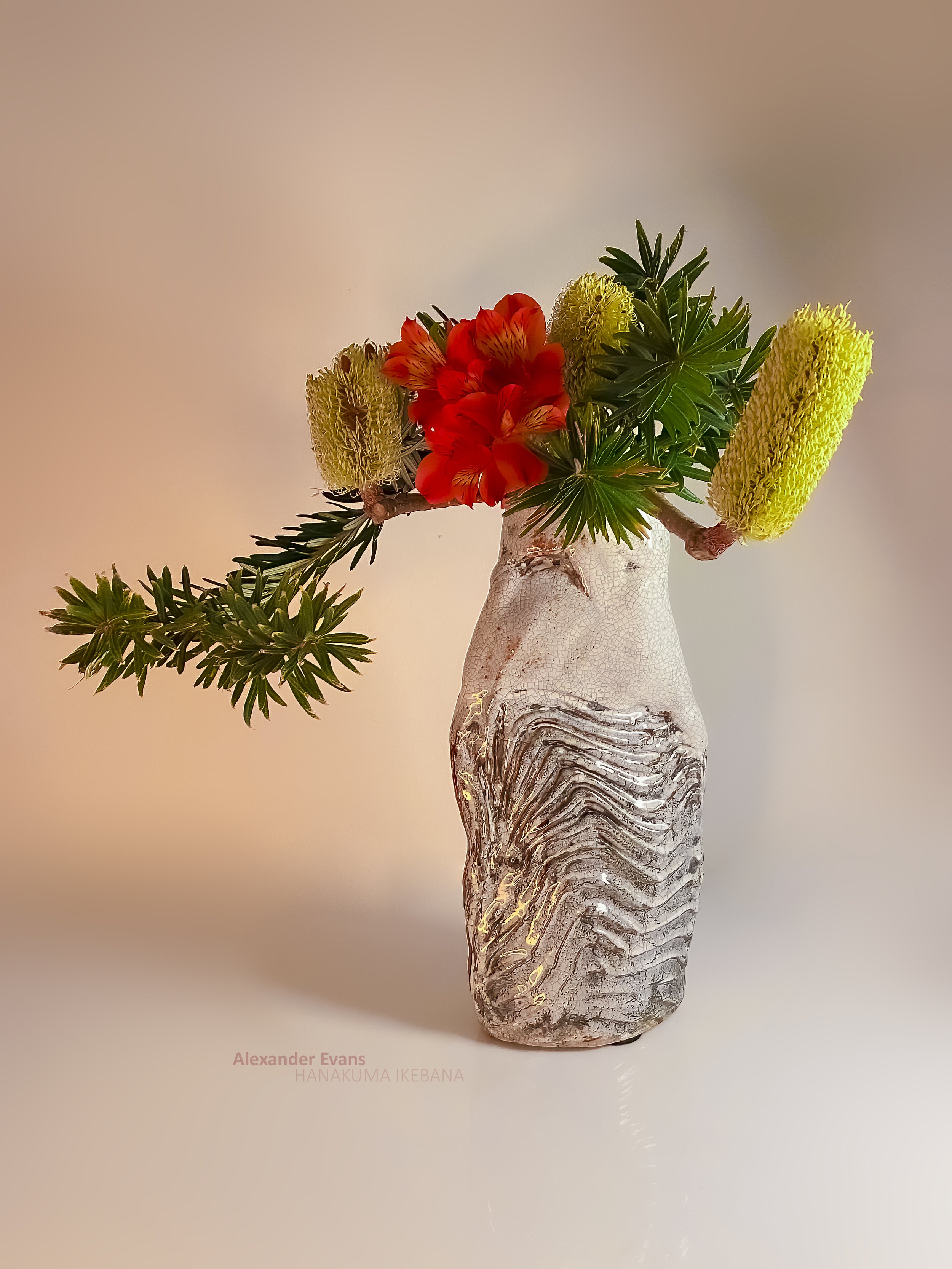Fabulously fruity february was a really interesting introduction to the monthly ikebana challenge and encouraged everyone participating to create arrangements featuring fruit. The fruit could be on the branch or off the branch, sliced, diced or whole so long as fruit was involved. Needless to say the resulting arrangements were very interesting and posed some unique challenges. Here are some key learnings and images of the arrangements I created during the challenge!
Key Learning
Turns out, fruit is heavy! So the most important aspect to deal with first and foremost is how to fix it in the position where you want it. The second important factor is how to keep your arrangement from falling over due to all that added weight! I often worked with quinces as that was what was available close at hand and they were definitely challenging on the first two points.
Fixing: In terms of fixing, a skill that definitely helped was my wiring technique and the techniques used for fixing heavy branches. In this technique large or heavy kenzans are used wherever possible and vertical supports are added to the kenzan with the displayed branch fixed into the kenzan AS WELL AS being wired to these other supports. In the case of deeper containers firmly anchored down sticks and crossbars all became very critical. Another technique that came into play was tension fixing principally where the displayed material had a strong directional change this presented an opportunity to use part of the material almost as a crossbar by wedging it firmly between two surfaces of the container. This also works when a subordinate branch is left attached to the main material but is trimmed to sit in the same way as a cross bar would. Finally using splitting of materials and fitting a another twig into the split forming a “T” rod was also a useful approach. This doesn’t fix in the same way as a crossbar (although has some similarity to both cross bar and downstick) but still aids in preventing material from rotating into an undesireable angle.
Balance: The method used for balancing such heavy material and stopping the containers from falling over was really in most cases to use containers that had a large amount of water in them or which were inherently heavy contaniers or that had a larger, more stable base. Additionally it was helpful to keep the heaviest parts of the material as much centered over the base of the container as possible. This led to some quite vertical arrangements! Other techniques also included counterweighting so where fruit was hanging on one side I would add a similar weight of material or fruit to the opposite side, this need not be symetrical but it does need to shift the overall centre of gravity of the arrangement over the base of the container. If working on an arrangement for 360 degree viewing this meant distributing the weight to all sides again making fixing these materials in place very important.
Summing up: Fabulously Fruity Fenruary was really fun and challenging and helped ne better understand some key ideas around, working with heavy materials, fixing those materials in innovative but very secure ways which also showed the fruit to its best advantage. And finally, balance in an arrangements extends far beyond the visual and is just as much about centre of gravity, choice of container and materials used.
Of course, there were many other insights gained but these few are the main key points I wanted to cover.
















